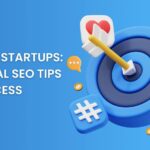
There is no one marketing strategy enough on its own in the competitive digital marketplace of today. Combining the power of SEO (Search Engine Optimization), SMM (Social Media Marketing), and Paid Ads can help you build your business faster and smarter. These three routes taken purposefully will build a robust, scalable growth machine.
Let us break down it and discover why combining them works, how to execute it, and what outcomes you may get.

The Why Behind Using SEO & Social Media Together
Many companies separate social media and SEO activities. Actually, though, they are more powerful taken together. While social media helps you interact with your audience and develop relationships, SEO helps you be discovered in search engines like Google. Aligning them can help you to cover more digital territory and strengthen your brand on many platforms.
Personal Thought: One of our clients, who runs a fitness equipment store, began showing up on Google using SEO, but their conversion stayed poor. Traffic from social media sources increased brand engagement as we matched their blog material with Instagram and Facebook tactics; their natural traffic became paying consumers. That is the force of synergy.
Amplifying Content Reach
Published a blog takes time to rank naturally. But it reaches your audience right away if you post that content on your social media sites. To keep your feed active and bring viewers to your site, you may also rework the same material into reels, carouels, or tweets.
For example, suppose you create a blog on “10 Healthy Eating Ideas.” Rather than only waiting for Google ranks, you construct a quick Instagram Reel compiling the advice and a carousel post including images. Add then a CTA: “Read the full blog in our bio.” You now are magnifying one piece of material across several platforms.
Enhancing Brand Recognition
People remember your brand more often the more places it appears. Social media lends your brand individuality; SEO provides authority for it. Taken together, they create respect and trust.
Pro tip: Use consistent branding—logos, tone, and messaging—over your website and social media channels. Whether someone discovers you on Google or Instagram, this makes your brand unforgettable.
Driving Targeted Traffic
SEO brings in those looking with intention for SEO. Social media attracts those who are simply surfing yet might be of interest. Paid ads allow you to target groups by demographics, behavior, and interest. Taken together, they cover every phase of the buyer’s path.
Simple Case Study:
Using SEO, a skincare niche client targeted keywords like “best face serum for oily skin.” But using Facebook ads, we sought consumers who followed beauty pages or interacted with skincare videos. Syncing both allowed them to get premium traffic from both new brand discovery and already searching people.
Gaining Valuable Insights
Combining sponsored ads, SMM, and SEO yields more data as well. Google Analytics, for instance, lets you see which sites are converting and ranking. Facebook Insights reveals the material users are interacting with. Paid ad data shows which audience categories fit best.
What You Can Learn:
- Which keywords drive conversions (SEO)
- What content your audience loves (Social)
- What headlines and offers perform best (Paid)
Analyzing these together will help you to modify your approach to attain better outcomes.
How to Integrate SEO and Social Media
Let’s explore some possible steps to let you properly match your strategies.
1. Synchronise Your Content Strategy
Plan first for important that will benefit social as well as SEO. Find search terms using keyword research tools; then, produce shareable and searchable content.
Tip:
If “home workout plans” is a trendy keyword, write a blog geared for SEO, then produce a YouTube Short, an Instagram carousel, and a LinkedIn article derived from the blog. This increases reaches and saves time.
2. Optimise Social Media Profiles
Your social media presence should be as well optimized as your website. Add pertinent keywords about sections, in your bio, even in hashtags and captions.
Example:
A travel service aiming at “custom Europe tours” should have that phrase in their Facebook page description, Instagram bio, and hashtag system. This raises profile in search as well as social media sites.
3. Leverage Paid Social Media Ads
Use sponsored adverts to highlight naturally occurring excellent content. You might highlight landing sites, product pages, or blog entries. Lookalike targeting – target users who visited your website (remarketing) or new audiences similar to your followers.
Pro Insight:
Let your organic efforts reveal what’s working. Run an amount of ad money behind a post if it gets more likes and shares. You are using your advertisement money more wisely.
In Conclusion
Combining paid marketing, social media, and SEO is not only a “nice-to-have” approach—it’s a growth powerhouse. Paid advertising give quick reach; SEO creates long-term visibility; social media increases brand interaction. Taken together, they enable you to reach, interact with, and convert your audience unlike anything else.
Start modest, coordinate your efforts, then scale according to performance. Real business success occurs when you handle your marketing as a team game rather than a solo activity.
Frequently Asked Questions
1. Why is it important to combine SEO and social media marketing?
Because it increases visibility, raises content reach, and promotes brand awareness across several digital media.
2. Can social media improve my SEO rankings?
Indirectly, indeed. Backlinks, greater traffic, and better engagement measurements—all of which support SEO—can result from social shares.
3. Should I use paid ads if I already have good organic traffic?
Yes! Paid advertising test new offers, let you retarget interested consumers, and enable faster scaling. It enhances natural attempts.
4. How do I track performance across SEO, SMM, and ads?
Use tools like Google Analytics, Facebook Ads Manager, and Google Search Console. UTM tracking also helps measure exact campaign results.5. How do I start integrating all three?
Start with a shared content calendar, improve your profiles, monitor success often, and test minimal sponsored campaigns around your best product.






